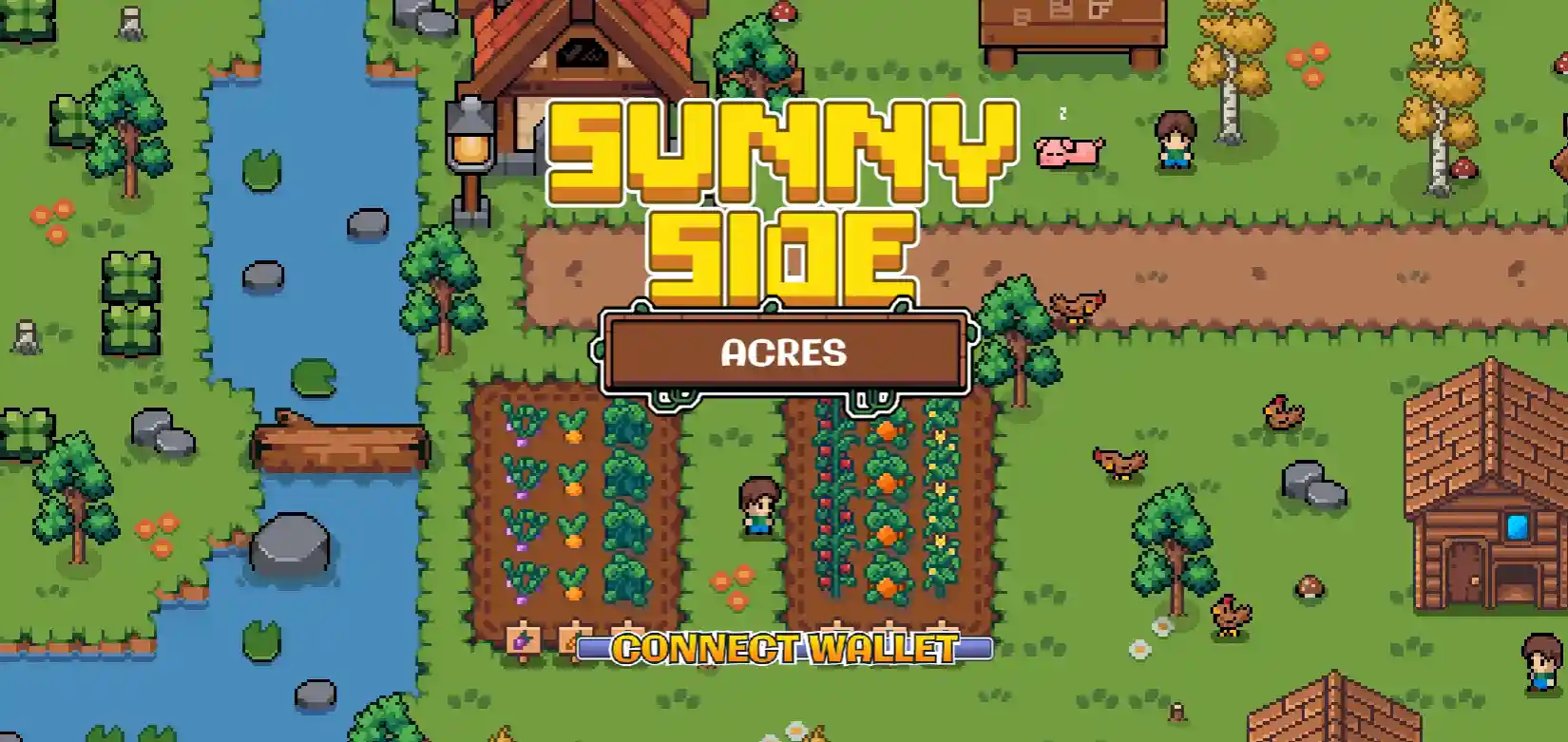SunnySide Acres is a unique pixel-style farming RPG in an open world, fully implemented on-chain. Players build and develop their farms, tame creatures, battle, construct and interact with each other through a decentralized ecosystem. All gameplay interactions — from mechanics to the economy — are secured on the blockchain.
- Concept and Game World
- Core Gameplay Mechanics
- Economy and In-Game Structure
- Technical Foundation and Implementation

Concept and Game World
SunnySide Acres is a symbiosis of classic farming RPGs and modern blockchain technology. In this world, players begin by restoring an abandoned farm, gradually turning it into a cozy homestead, taming creatures and exploring the surrounding environment. The core feature is that the entire ecosystem runs via smart contracts, ensuring transparency, true ownership of digital assets, and freedom of interaction.
Every player action is recorded on-chain, eliminating forgery, interference, and centralized control. SunnySide Acres is not just a game, but a decentralized digital world where every user becomes an active participant in its development.
Core Gameplay Mechanics
The gameplay of SunnySide Acres is carefully crafted and offers a wide range of activities. Whether you prefer peaceful farming or taming rare creatures, there is something for everyone. The flexible progression system and digital ownership make interaction with the game world meaningful and long-term.
Here are the key mechanics implemented in the game:
-
Farming: planting, growing and harvesting more than 100 types of crops.
-
Ranching: breeding animals to obtain resources for crafting and cooking.
-
Construction: designing and building structures to upgrade your farm.
-
Crafting and Cooking: creating items and meals that influence progression and efficiency.
-
Exploration and Combat: taming creatures, defending the farm, and interacting with other players.
Each mechanic is integrated into the overall on-chain structure and directly affects the game's economy. This creates a strong connection between player progression and the state of the decentralized world they inhabit.
Economy and In-Game Structure
The foundation of SunnySide Acres lies in its well-thought-out in-game economy. It is built on principles of transparency, digital ownership, and decentralized trading. All resources acquired during gameplay — from crops to crafted items — can be used, sold, or transferred to other players.
The table below outlines the key components of the economic model:
| Element | Description |
|---|---|
| Game Assets | Crops, animals, buildings, and crafted items are represented as NFTs or on-chain tokens. |
| Trading and Exchange | Free transfer and sale of resources between players via smart contracts. |
| Transaction Transparency | All actions are recorded on-chain, fostering trust and preventing fraud. |
| Social Participation | Players contribute to the world's development through community and collective governance. |
This structure encourages players to be active participants in the economy rather than passive consumers. It also helps create long-term value not only through gameplay but in their owned digital assets.
Technical Foundation and Implementation
SunnySide Acres is built on a fully on-chain architecture, meaning there is no reliance on centralized servers and maximum operational autonomy. All gameplay logic and player actions are processed via smart contracts, eliminating censorship, downtime, or data loss.
The project runs on a blockchain with high throughput and low fees, enabling quick execution of even simple actions such as planting or item trading. This opens the door to scalable expansion and modular gameplay enhancements.
The uniqueness of SunnySide Acres lies not only in its pixel-art style but also in its technical depth. Blockchain transparency allows players to track real outcomes and maintain full control over their digital assets.
SunnySide Acres is not just a farming game. It’s a complete digital world where players can live, build, interact, and earn. Through its on-chain implementation, every element — from gameplay to economy — becomes verifiable, user-owned, and open to collective evolution.
The project offers a new approach to what gaming can look like in the Web3 era: open, decentralized, and truly owned by its players.





